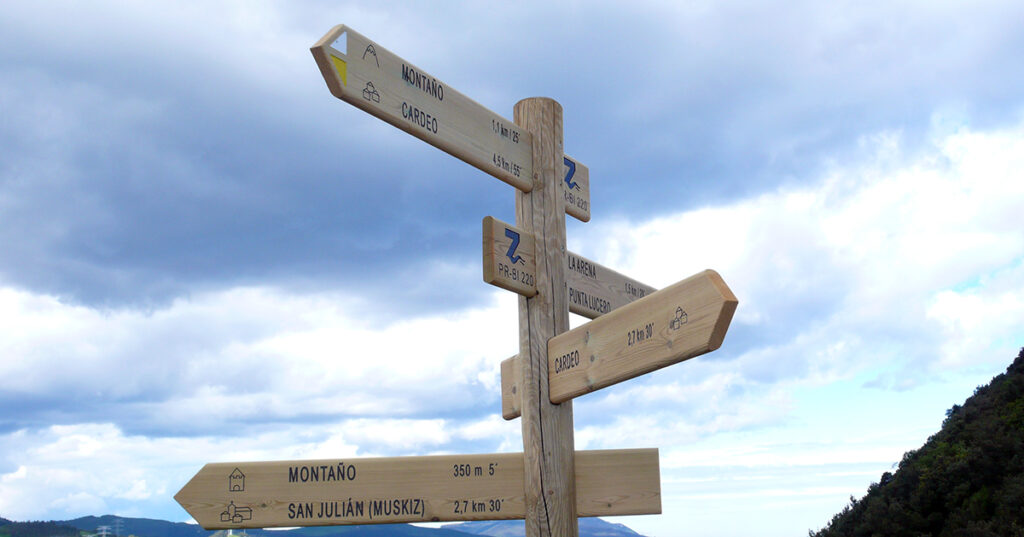Basque ethnography at a glance
An extensive network of ways, tracks, trails, paths and lanes crisscross the Basque Country for people to enjoy nature, learn about the past and to use for outdoor activities. That may sound like an advertising slogan, but it is rather praising their use, enjoyment and learning about the history where they can be found.
It would probably be hard to find another place where so many GR (Gran Randonnée long-distance trails), PR (Petit Randonnée short-distance trails), greenways, etc. exist in such a small physical space. However, that has not always been the case. The proliferation of this mesh of routes has occurred in the last 50 years. Strangely enough, it is the result of a wide range of earlier religious, livestock, industrial or commercial uses, to name a few.
Panels, posts, markers, wooden and metal signposts, along with marks and signs using different colours and symbols (arrows, stripes, circles…) on trees, rocks, house fronts, fences, etc., show visitors the way. However, the ways have frequently or infrequently fallen into disuse due to changes in the original direction, the signs becoming worn or merely apathy.
I do not believe that this is the right place for a list of the many different signs, but there is great variety. Thus, we have the older signs (at the official level) that mark the GR: treks of several days that sometimes include mountain routes to reach iconic summits, to cross the Pyrenees from the Bay of Biscay to the Mediterranean Sea, or to follow the Route of Wine and Fish). Those GR, in the same way as the PR (short circular routes), often coincide or overlap with bidegorris (bike lanes and footpaths), cultural visits or sightseeing, and routes added by Visitors’ Interpretation Centres.
At a cultural level, special mention should be made of the greenways that follow the old mining railways, the natural pathways that were (and are) mainly used to take livestock up to pastureland, along with the work or trade routes, Roman or medieval roads, paved and bridle paths. Of course, we cannot forget the Camino de Santiago or St. James’s Way, with its branches and different routes, and which is very much in fashion attracting walkers from around the world. That means that the Way is perhaps now more a source of income than as a means of cultural dissemination, but a balance just needs to be sought.
And so as not to leave anything unsaid, and ignoring the expression that the unknown does not exist, we have those countless ways and paths that – even though they are unmarked – we use thanks to our local knowledge.
Hiking or trekking, mountain biking, Nordic walking and horse-riding have clearly marked a turning point in outdoor recreation. Along with the showcasing of culture by means of an audiovisual educational approach, they provide an excellent way of disseminating the local heritage: protecting that heritage is as important for its community as for the person taking part; for the previous dwellers and the generations to come.
Emilio Xabier Dueñas – Folklorist and ethnographer




